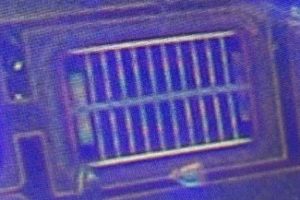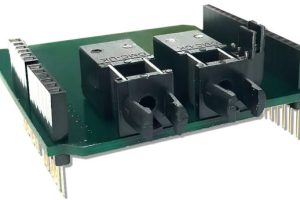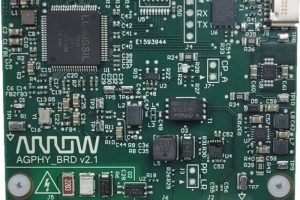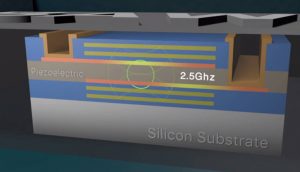
The crucial piezo film is sandwiched between two metal electrodes and several acoustic reflectors to confine mechanical energy (see diagram). “The end result is a very stable high-Q resonator tank,” said the firm, which is claiming a Q of ~1,200 for its ‘VCBO’ (voltage-controlled BAW oscillator), leading to low jitter (see below) and frequency stability of +/-40ppm across temperature, voltage and aging. High vibration and shock resistance is also claimed.
Update: Electronics Weekly asked of TI: ‘Is the oscillator is inherently aging-proof, or is aging compensation is applied’, to which TI replied: “Aging compensation is applied via the radio sub-system core [see application below], this is fully transparent to the user.”
TI is not intending sell simple quartz-replacing oscillator chips based on its BAW technology, but rather use the resonators in devices that extend existing product lines.
Its first two BAW-containing chips will be the CC2652RB wireless microcontroller and LMK05318 network synchroniser clock.
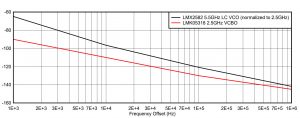
CC2652RB, available in 7 x 7mm VQFN (very thin QFN), uses its resonator to replace an external 48MHz crystal. It is a multi-protocol 2.4GHz wireless microcontroller that can implement Zigbee, Thread, Bluetooth low energy and proprietary protocols. It can operate over -40°C to 85°C.
The SimpleLink CC2652RB wireless MCU-based TI LaunchPad development kit is available
LMK05318, 7 x 7mm 48pin VQFN, is a single-channel network synchroniser clock is aimed at 400Gbit/s and is claimed to “deliver the lowest bit errors for 56Gbit/s and emerging 112Gbit/s pulse-amplitude modulation-4 links,” according to the firm. Another claim is “industry’s best hitless switching performance” – at +/- 50ps phase transient.
LMK05318 evaluation module is available.
 Electronics Weekly Electronics Design & Components Tech News
Electronics Weekly Electronics Design & Components Tech News

